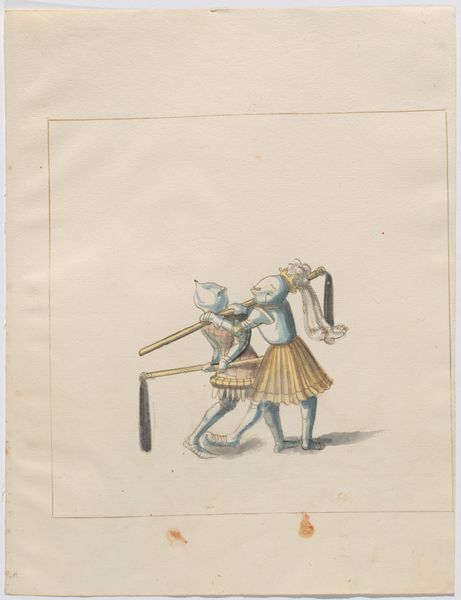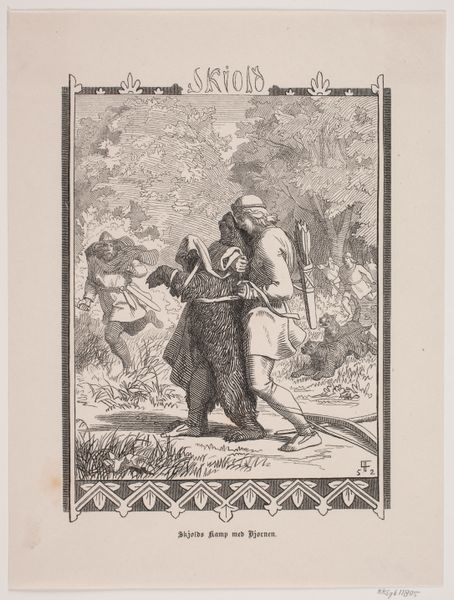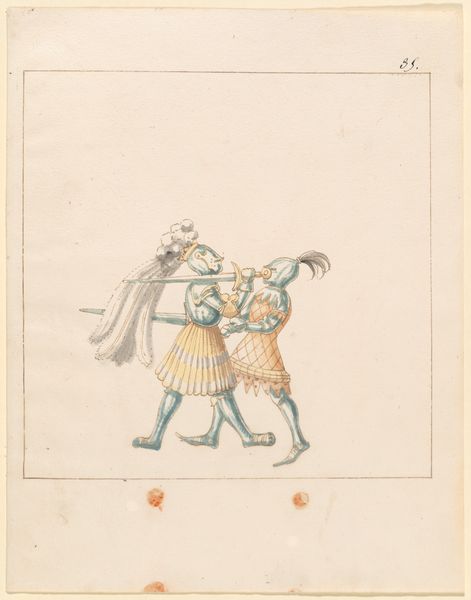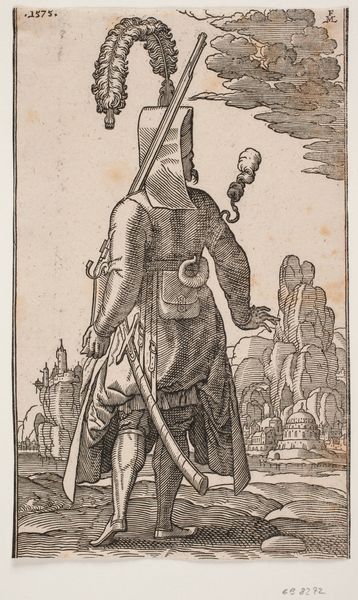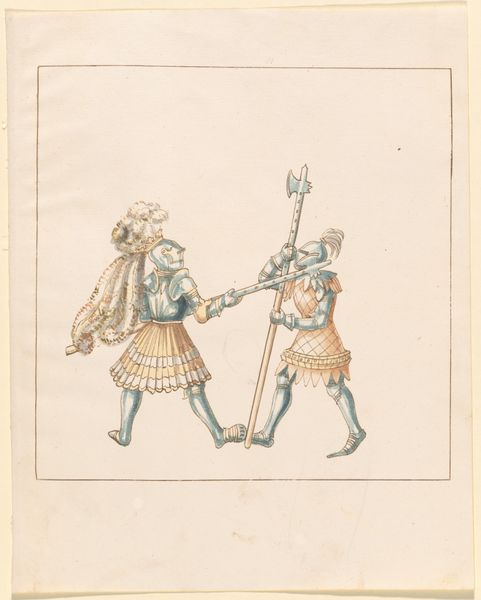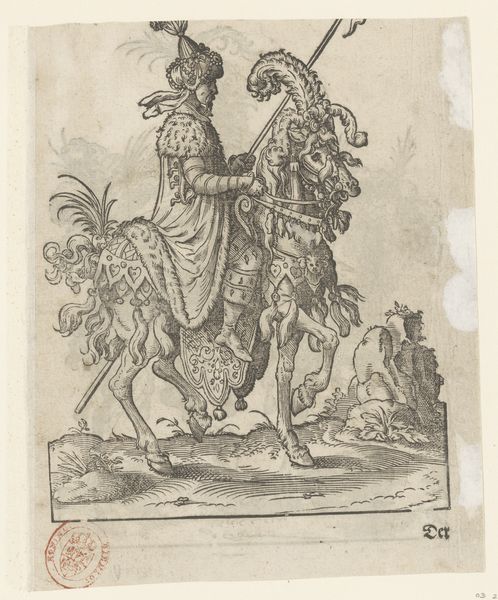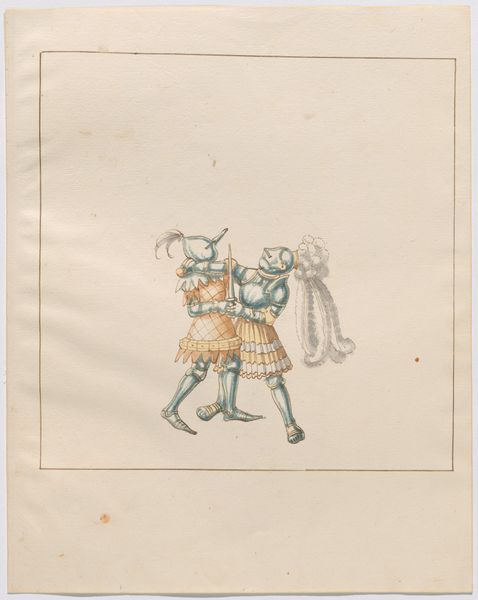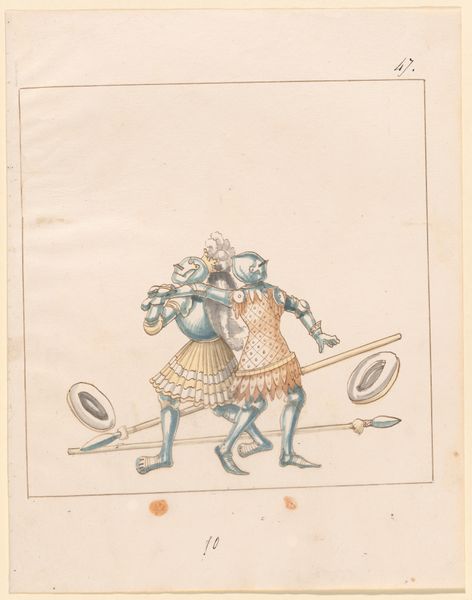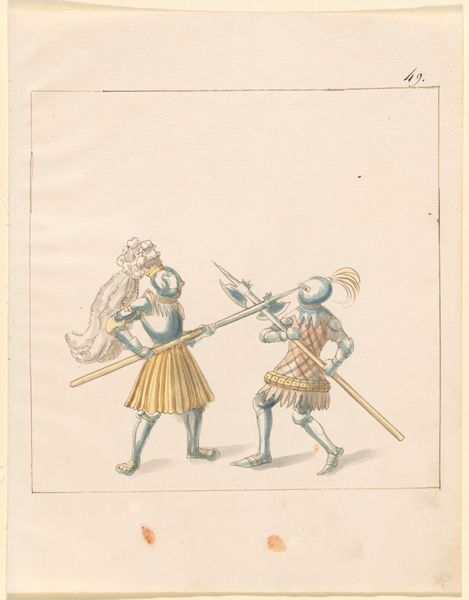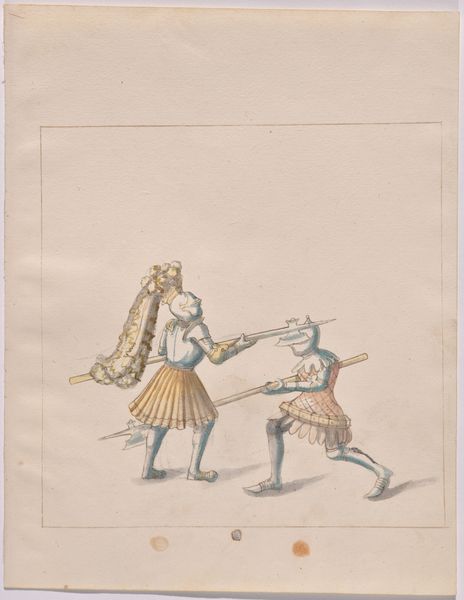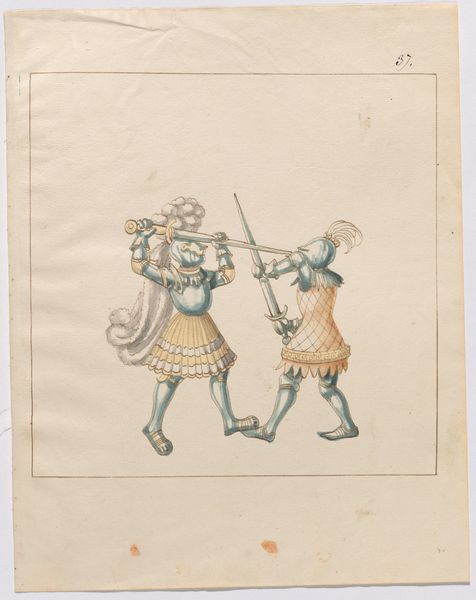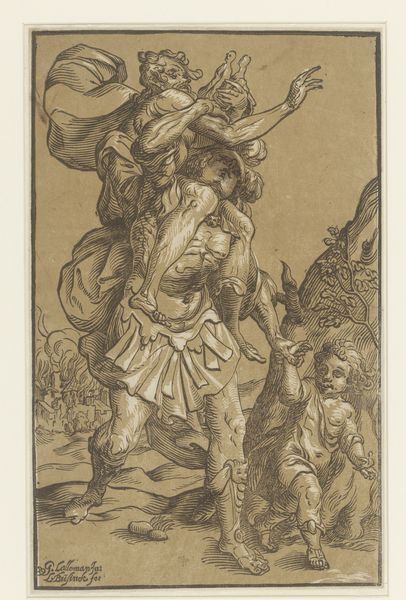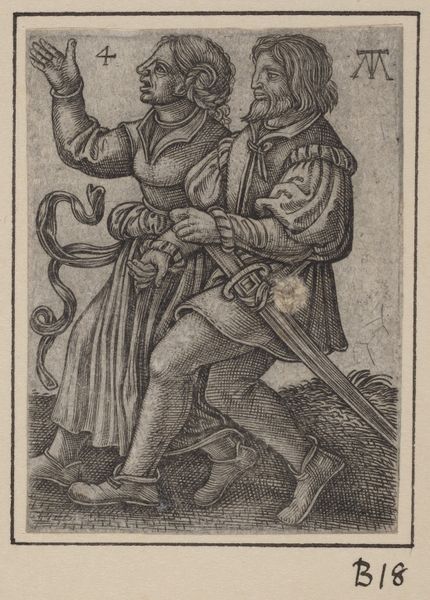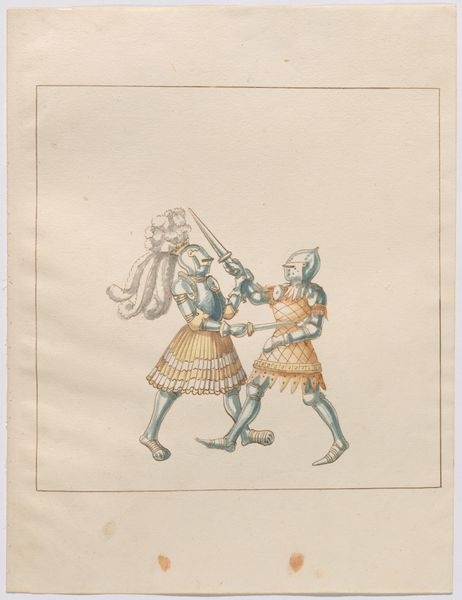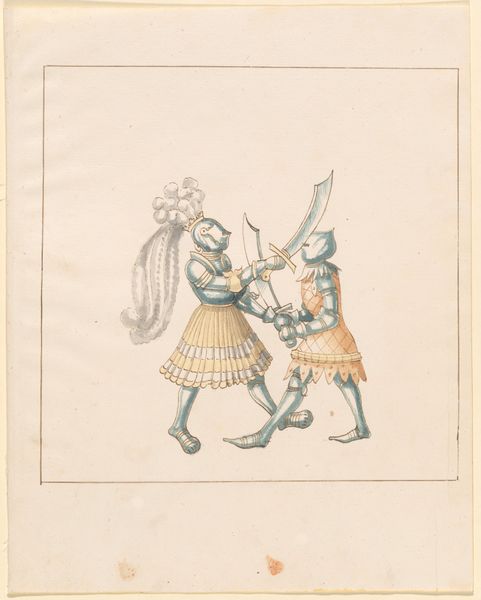
Hab.t de Juida, from the playing cards (for quartets) "Costumes des Peuples Étrangers" 18th century
0:00
0:00
drawing, print, ink
#
portrait
#
drawing
# print
#
ink
#
men
#
costume
#
sketchbook drawing
#
watercolor
Dimensions: 3 3/16 × 2 1/16 in. (8.1 × 5.3 cm)
Copyright: Public Domain
Editor: This intriguing 18th-century print, "Hab.t de Juida" by an anonymous artist, comes from a deck of playing cards titled "Costumes des Peuples Étrangers." It depicts a couple, seemingly from "Juida," with a child. The composition is striking but also feels… loaded. As a historian, how do you approach a piece like this, knowing it’s tied to a specific cultural moment? Curator: Precisely! The "Costumes des Peuples Étrangers" presents a lens into how Europeans perceived and categorized the rest of the world. Given this card's connection to "Juida," now Ouidah, in present-day Benin, a major slave trading port, how might its production and consumption be tied to the political and social undercurrents related to race and colonialism of that time? Editor: So, this seemingly innocuous image of "foreign" dress, actually participates in the power dynamics of its day. It makes me wonder if there's a potential tension between ethnographic documentation and exoticizing "othering." Curator: An excellent observation! These images often played a role in constructing European identity through contrasting it against others. What aspects of the figures' depiction—their clothing, skin tone, expressions—seem like choices designed to appeal to, or even reinforce, certain stereotypes for a European audience? Editor: The bare chests, the jewelry… it does seem designed to create a spectacle. Curator: And it becomes more critical to interrogate the intent behind that spectacle. Ask yourself, who is defining "Juida" and for what purpose? Understanding such imagery within the historical power dynamics reveals how profoundly art can be interwoven with social and political agendas. Editor: I see. This simple playing card becomes a site for understanding how images construct and disseminate power. That's incredibly helpful; thank you! Curator: Indeed, viewing it this way allows us to consider the broader historical context that shaped both the creation and reception of this artwork.
Comments
No comments
Be the first to comment and join the conversation on the ultimate creative platform.
